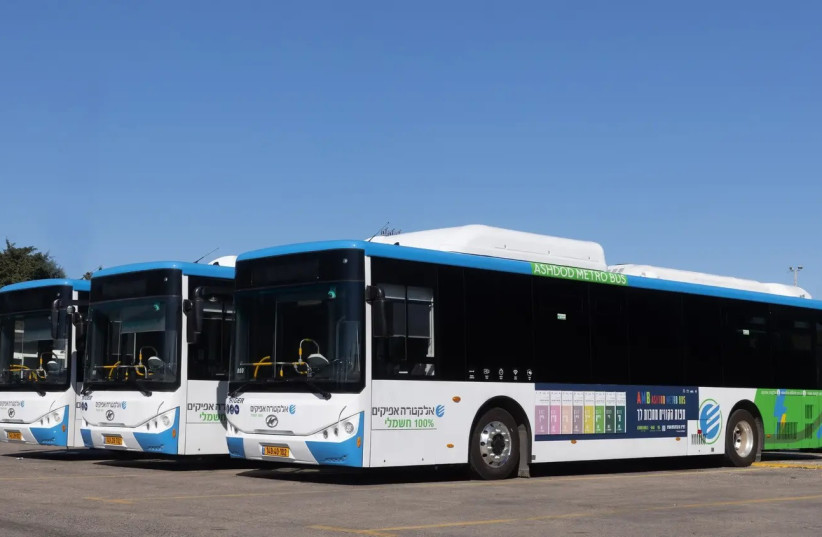While new car deliveries in 2023 maintained similar levels to those in 2022, the bus market reached new heights. In previous times, we might have described it as an explosion.
In 2023, 2,688 buses hit Israeli roads, marking a 17% increase. Diesel, the polluting engine system, still dominates with 59% of the market, but electric buses now account for 33% and natural gas for 8%. This data comes from the Transportation Our Way Association, analyzed by Avraham Stern.
However, a revolution occurred in urban buses, with electric ones rising from a 37% market share to 66%, while diesel and gas buses each dropped to 17%. This shift is part of the progress toward 2026, a year set by the Transport and Environmental Protection Ministries when the import of diesel-powered urban buses will be banned.

In the intercity sector, the picture is almost the opposite, with 93% of buses being diesel, but electric buses already account for 5% and gas for 2%. Range limitations still hinder alternative drives here, including gas, which doesn't reach the range of diesel and requires refueling in the middle of the day. Electric intercity buses are being deployed on shorter and slower intercity routes. However, almost all electric bus sales were to public transportation companies, with only a few sold to private entities.
But there is also good news: nearly 100 accessible intercity buses were delivered last year, equipped with lifts and space for securing a wheelchair, and the expectation is that in upcoming tenders, their number as a required percentage of the fleet will increase, improving accessibility for people with disabilities. In contrast, the category of double-decker buses has been erased since Egged purchased four such MAN buses two years ago.
Among the buses purchased were 111 high-capacity articulated buses for cities, which can transport more passengers, and 74 midibuses suited for narrow streets, with 54% of them being electric for the first time. Additionally, 16 bulletproof buses were purchased, a category not found in public transportation in other countries.
Regarding models, the Chinese Yutong, imported by Pandan, climbed to the top for the first time with 620 buses, thanks to large purchases by Dan, which is a partner in the company. Volvo (539) ranked second, followed by another Chinese company, Golden Dragon (509), Mercedes (233), and the Turkish Otokar (179). The Chinese BYD delivered 179 buses, all electric, Isuzu 97, Scania 89, and the Turkish Temsa 63. The Chinese Zhongtong delivered 54.
Chinese buses (1,370 units, 51%) still dominate the market, the Swedes are second (619, 23%), and the Turks (371, 14%) and Spaniards (270, 10%) recorded increases. 57 buses came from Poland.
And how is the local bus industry, which builds bodies on imported chassis, faring? 520 were assembled at the Merkavim plant of Meir, the Volvo importer, in the Caesarea industrial area, and 456 at the Haargaz plant of businessman Haggai Shalom.
In any case, such growth and variety should have been noticeable to public transportation users. However, the policy led by Transportation Minister Miri Regev to reduce enforcement and add the option for more private cars to travel ostensibly with one or two passengers beside the driver, has resulted in public transportation being stuck in traffic jams just like private vehicles. Stay updated with the latest news! Subscribe to The Jerusalem Post Newsletter
The Transportation Our Way passenger association responded: "We welcome the increase in the number of new buses on the road, resulting in almost 40% of the fleet being less than two years old, and the investment in electrifying the bus fleet, which is progressing at a good pace. However, it should be noted that without developing dedicated lanes for public transportation and increasing enforcement in existing lanes, which unfortunately has been minimized recently, and without improving the service provided to passengers by the operators, we will not see a real change in public transportation and a reduction in travel time needed to make public transportation an alternative for more and more people."
